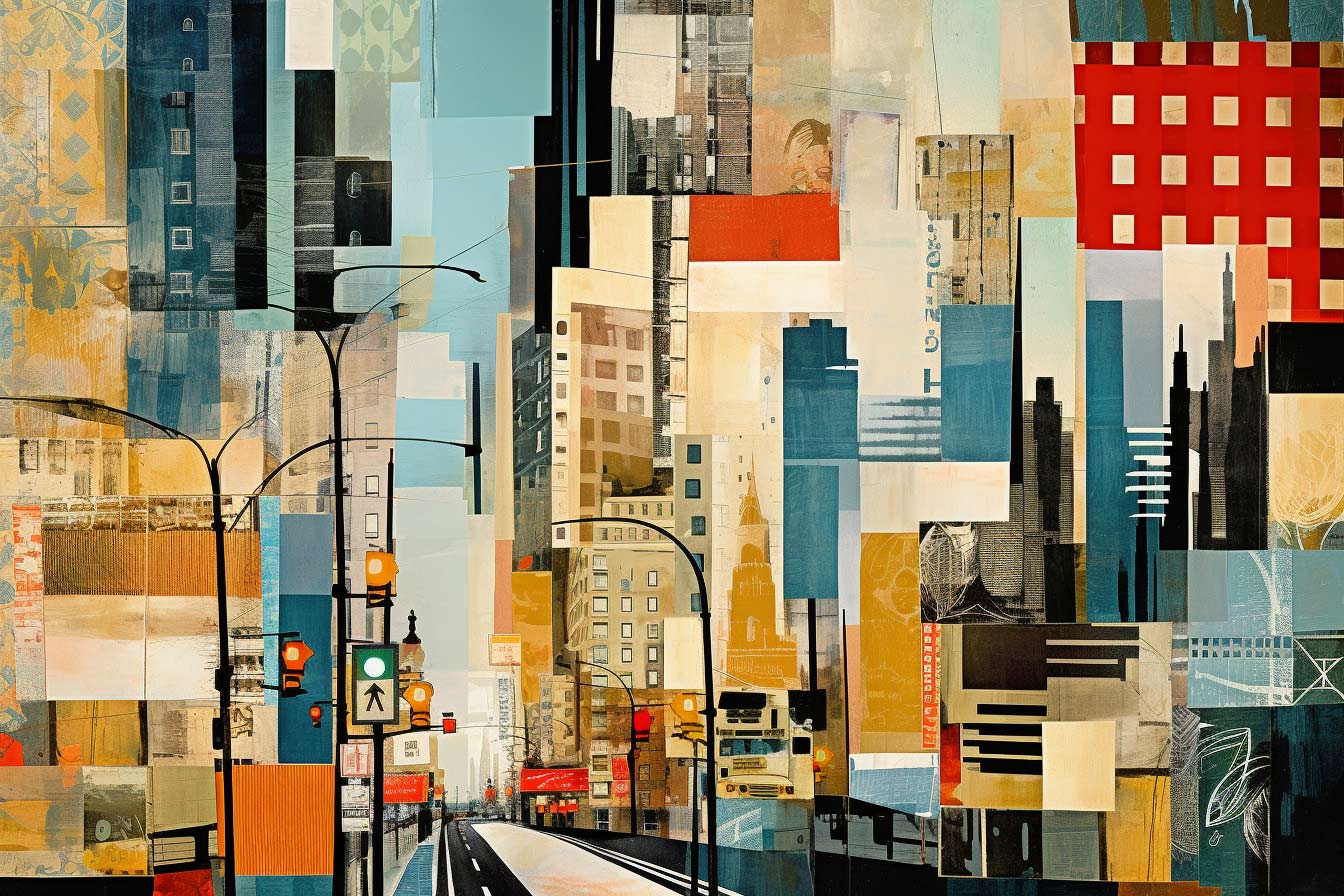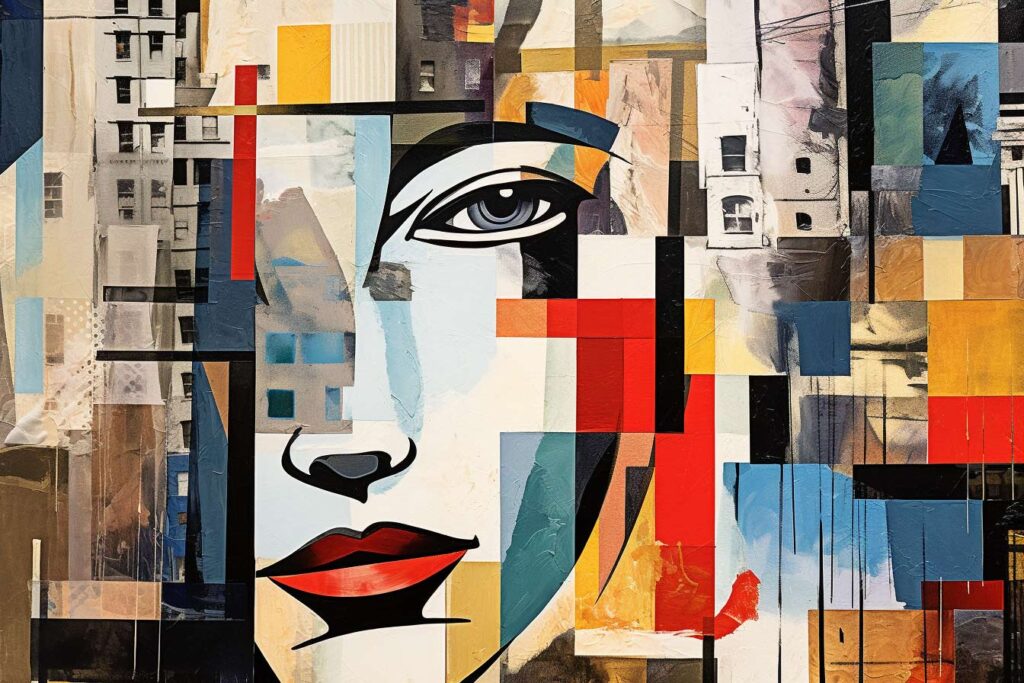Modern City Collage: Fragmenting & Reconstructing Urban Landscapes
In an age characterized by ceaseless innovation and the unrelenting beat of urban progress, art must find new ways to capture the spirit and vigor of the modern metropolis. The hum of the streets, the merging of old and new architectures, and the cacophony of daily life—these cannot be conveyed in mere realistic renditions. Enter the cubist’s realm, where the ordinary is made extraordinary and the linear is distorted to capture the multidimensional essence of urbanity.
The Cubist’s Canvas: A Window to Urbanity
It is a curious endeavor to fragment and reconstruct the cityscape, to approach a vista as if one were shuffling the pieces of a jigsaw puzzle. The cubist painter does not merely replicate the urban; they deconstruct it, inspect its parts, and then piece it back together in a way that offers viewers a novel perspective on the familiar. Buildings, once tall and imposing, now appear from various angles simultaneously, revealing their hidden nuances. Cars, not just seen from the side or the front, but from above and below, remind us of the multiple realities unfolding in our streets.
Pedestrians: The Heartbeat of the City
Within the disjointed structures and fractured vehicles, the essence of the city—its people—comes alive in startling ways. Fragmented yet whole, the pedestrians in a cubist painting are at once ubiquitous and singular. Each face, each posture, tells a tale of life in the city. They are not static subjects but dynamic embodiments of urban rhythms, fleeting emotions, and the ever-evolving human experience.
Infusing Authenticity: Maps & Newspapers
To further root their works in the materiality of urban existence, cubist painters often incorporate tangible fragments of the city. Snippets of maps, bearing the streets and routes that define the movement of the metropolis, become an integral part of the canvas. Newspaper clippings, with their headlines, stories, and advertisements, echo the city’s voice, its concerns, its joys, and its daily intrigues. These elements do not merely serve as decorative additions; they anchor the abstract in reality, offering a bridge between the tangible city and its artistic representation.
A Dance of Perspectives
The Modern City Collage is more than an artistic style; it’s a philosophy, a way of seeing, and an ode to urban life. By fragmenting and reconstructing the familiar, the cubist painter invites viewers on a transformative journey, allowing them to see their surroundings with fresh eyes and renewed wonder. In this dance of perspectives, the essence of the city comes alive, reminding us that beauty and meaning can be found in the fragmented, the disjointed, and the reconstructed.

